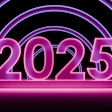
Mary Boone (@maryboone) is president of Boone Associates, a consultancy in Essex, Connecticut, that specializes in interactive meeting design.
It seems like only yesterday that the meetings industry was abuzz with the General Services Administration meeting scandal, and now we’re experiencing déjà vu as we watch the I.R.S. answer for its handling of funds for conferences and meetings.
As a "solution," the Treasury Department is insisting that any conference with costs above $25,000 be approved by the assistant secretary for management, and any conference over $250,000 be approved by the Treasury secretary. As a taxpayer, I'm frankly appalled that we would ask people at this level to micromanage something that represents such a miniscule portion of the department's budget. This is not a long-term solution to the problem.
We need to get organizations of all types to focus not only on the cost of meetings, but also the value they deliver. How can we tell the value of a meeting simply by looking at how much it costs? What if a $4 million meeting results in $100 million worth of savings to taxpayers? In short, we need to acknowledge the need for more efficiency, but we must also get decision makers to focus on the importance of the effectiveness of meetings and conferences.
The meeting industry needs to send a message to not only the Treasury, but also to other government agencies (and corporations, for that matter) that the real solution lies in completely rethinking the way they design and invest in meetings.
Well-designed, purposeful meetings are arguably a leader’s most vital and effective communication medium—now, and well into the future. Those who are deprived of a key communication channel will be stymied in their attempts to formulate, communicate, and execute the missions of their organizations.
We also need to explain that virtual meetings are not a simple answer to the problem. Technology affords some wonderful advantages, but it cannot replace face-to-face communication. Can you imagine replacing diplomatic missions with Web conferences? Different media are appropriate for different objectives.
I strongly believe that in-person meetings—enhanced by technology—are the premier leadership medium of the 21st century. New breakthroughs in meeting design are transforming the way leaders inspire, educate, and inform people. Meetings and conferences are essential components to continuing our emergence from the economic downturn.
Here's the message we need to send to leaders:
1. Require all government agencies to articulate a case for meeting expenditures based on both efficiency and effectiveness.
2. Insist on meeting design that focuses the form and content of the meeting on measurable mission-related goals. Meeting design is different from meeting planning, which focuses on the logistics and hospitality elements of the event. We need both.
3. Use certified meeting professionals to ensure cost efficiencies.
4. And finally, every government agency (and corporation) should manage its entire portfolio of meetings instead of focusing solely on the costs of a few major events.



















